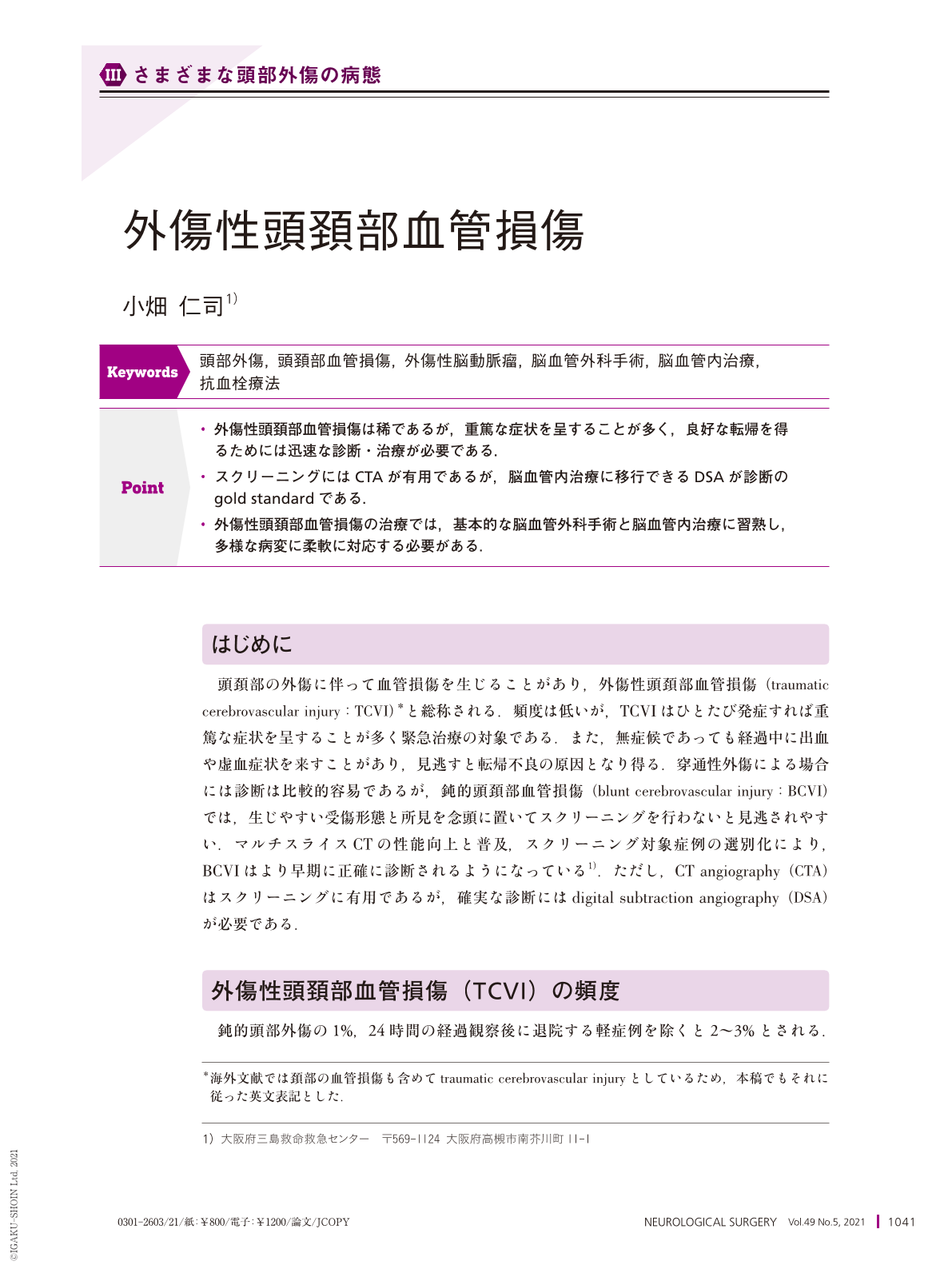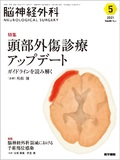Japanese
English
- 有料閲覧
- Abstract 文献概要
- 1ページ目 Look Inside
- 参考文献 Reference
Point
・外傷性頭頚部血管損傷は稀であるが,重篤な症状を呈することが多く,良好な転帰を得るためには迅速な診断・治療が必要である.
・スクリーニングにはCTAが有用であるが,脳血管内治療に移行できるDSAが診断のgold standardである.
・外傷性頭頚部血管損傷の治療では,基本的な脳血管外科手術と脳血管内治療に習熟し,多様な病変に柔軟に対応する必要がある.
Traumatic cerebrovascular injury(TCVI)is an infrequent clinical entity caused by trauma to the head and neck. However, it may lead to devastating brain injury with high morbidity and mortality. Therefore, early diagnosis and prioritized strategic treatment are essential to rescue affected patients. Three-dimensional CT angiography is the preferred method for screening of TCVI. Digital subtraction angiography can produce high-resolution images of injury and is used as the gold standard imaging method. It also allows undertaking endovascular treatment when necessary. TCVI can be classified by a combination of(1)pathogenesis: perforating or non-penetrating(blunt); (2)anatomical location: neck, craniofacial, or intracranial; and(3)pathogenesis: ischemic, hemorrhagic, or others(e.g., arteriovenous fistula). Treatment varies according to the pathology and severity of TCVI. Ten cases of various TCVI have been presented and discussed to outline the primary diagnostic and therapeutic essence. To provide prompt and accurate treatment for patients with TCVI, neurosurgeons in charge should be aware of TCVI and master fundamental skills of cerebrovascular surgical and endovascular procedures to apply in an emergency setting.

Copyright © 2021, Igaku-Shoin Ltd. All rights reserved.


